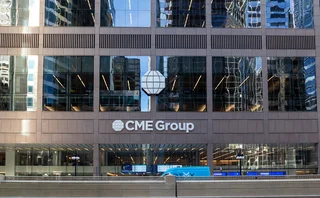
Boston-based AIR releases terrorism risk model
AIR Worldwide, a Boston-based catastrophe and weather risk modelling company, today released what it claims is the first commercially available terrorism risk model. The model estimates the financial impact of insured property and workers' compensation losses from potential future terrorist attacks in the US.
Insurers and reinurers with a large property portfolio are likely to pay $200,000 for the model, whereas smaller companies will pay up to $50,000. A spokesman added that AIR is also examining non-conventional weapons damage including chemical, biological, radiological and nuclear. Models incorporating these threats should be available by early 2003. AIR is also working on an international roll-out of the services.
AIR employed a team of counter-terrorism specialists with experience at government agencies such as the FBI, CIA and the Department of Defense to develop the model.
"The evaluation process that AIR has undertaken regarding terrorism is extremely important," said Buck Revell, a former associate deputy director at the FBI responsible for criminal investigations, and one of the advisers for AIR’s model. "The first and most important element of being prepared is to understand the true nature of the risk and the consequences of not being prepared for a terrorist attack."
The frequency and severity of attacks were estimated using the Delphi Method, developed by the Rand Corporation at the start of the Cold War. The Delphi Method has been used to generate forecasts in many areas including inter-continental warfare and technological change.
Only users who have a paid subscription or are part of a corporate subscription are able to print or copy content.
To access these options, along with all other subscription benefits, please contact info@risk.net or view our subscription options here: http://subscriptions.risk.net/subscribe
You are currently unable to print this content. Please contact info@risk.net to find out more.
You are currently unable to copy this content. Please contact info@risk.net to find out more.
Copyright Infopro Digital Limited. All rights reserved.
As outlined in our terms and conditions, https://www.infopro-digital.com/terms-and-conditions/subscriptions/ (point 2.4), printing is limited to a single copy.
If you would like to purchase additional rights please email info@risk.net
Copyright Infopro Digital Limited. All rights reserved.
You may share this content using our article tools. As outlined in our terms and conditions, https://www.infopro-digital.com/terms-and-conditions/subscriptions/ (clause 2.4), an Authorised User may only make one copy of the materials for their own personal use. You must also comply with the restrictions in clause 2.5.
If you would like to purchase additional rights please email info@risk.net
More on Risk management
Transforming stress-testing with AI
Harnessing the power of automated scenario generation, by Mathieu Tancrez
Basel stops short on wrong-way risk
New guidelines a step in right direction, but experts warn they won’t prevent another Archegos
On resilience risk, banks prepare to let the bad times roll
Lenders bolster first-line teams and upskill boards as compliance with new rules bites
Complex EU active account reporting could drive trades out of UK
Draft Emir rules might not force large volumes to move to EU, but will make compliance difficult
Strategies for navigating market volatility in the post-US election landscape
This article examines the key themes of a recent webinar, sponsored by S&P Global Market Intelligence, on market volatility following the US election, including inflation risks, commodities, geopolitical uncertainty, ESG considerations and the role of…
Risk.net’s top 10 investment risks for 2025
Fresh concerns this year include a trade war, a stock market crash and growing social discord
For banks, change risk is inevitable; managing it, optional
Regional bank survey shows steady growth of dedicated change risk functions and adoption of leading indicators
Clearing members ponder the purpose of CME’s mystery FCM
Some think licence will be used to boost crypto clearing capacity, but many questions remain







